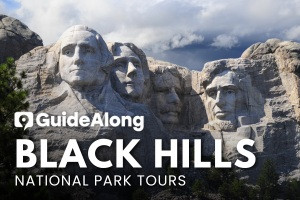- Human occupation of the White River Badlands of South Dakota dates back at least 11,000 years.
- Native Americans were replaced by first fur trappers, then soldiers, miners, cattle farmers, and homesteaders.
- On March 4, 1929, the region became Badlands National Monument.
- On Nov. 10, 1978, the United States Congress designated the area as Badlands National Park.
Early Peoples
Human occupation of the White River Badlands of South Dakota dates back at least 11,000 years. The earliest people to come into this area were ancient mammoth hunters. Much later they were followed by nomadic tribes whose lives centered on bison hunting. The Arikara were the first tribe known to have inhabited the White River area.
Fur Traders
French fur trappers were the first of many European arrivals who would supplant the Lakota. Trappers were soon followed by soldiers, miners, cattle farmers, and homesteaders who forever changed the face of the prairie.
Native Americans
Around 1775, the Oglala and Brule bands of the Sioux nation moved into the Bad River territory around the present town of Philip, South Dakota, approximately 40 miles from Badlands National Park headquarters. These Native Americans became were master plains hunters, subsisting primarily on buffalo.
After 40 years of struggle culminating in the Wounded Knee Massacre in 1890, the Lakota were confined to reservations. Cattle replaced the bison; wheat fields replaced the prairies; and, in time, gasoline-powered vehicles replaced the horses.
Fossil Hunters
Other explorers, such as Jedediah Smith, attempted to cross the Badlands with negative experiences. The early fossil hunters, such as Dr. Hiram Prout, Dr. Joseph Leidy, and Dr. F.V. Hayden, began arriving in the 1840s through the 1860s. The science of vertebrate paleontology has its roots in the White River Badlands formations.
Homesteaders
These early scientists were followed by the homesteaders. As early as 1890, cattle growers discovered the nutritious Great Plains grasses. They were followed by the wave of early homesteaders, primarily of northern European heritage. The drought of the 1930s brought many hopeful farmers to their knees.
Badlands National Monument
The Lakotas gave the area its name, calling it mako sica, which translates into "land bad." Today, a badlands describes a dry region of rugged terrain that offers a terrific challenge to cross. The term is used by geologists worldwide to describe this type of terrains. On March 4, 1929, the region became Badlands National Monument.
National Monument Expansion
The United States Air Force used as much as 130,000 acres of the badlands as a bombing range---land that Congress added to the park in the late 1960s.
Designation as a National Park
On Nov. 10, 1978, the United States Congress designated the area as Badlands National Park.

